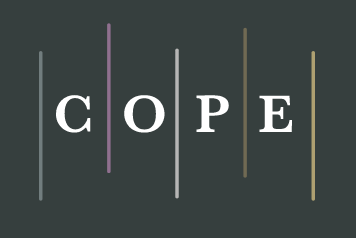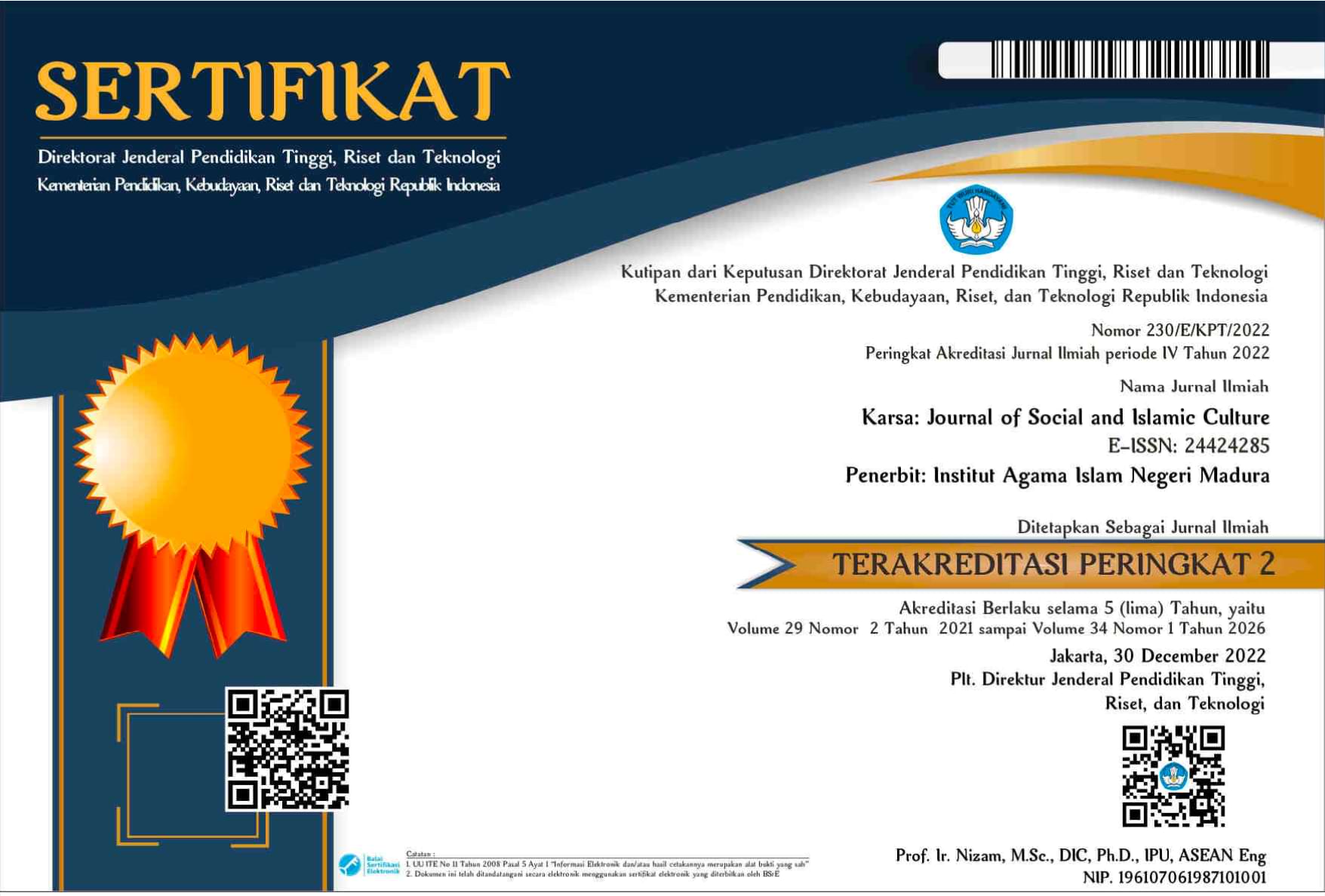Robinah: A Dignified Women in the Dutch East Indies in Dutch Colonial Era
 Abstract views: 7
,
Abstract views: 7
,
 PDF downloads: 4
PDF downloads: 4
Abstract
Dutch colonialism from 1860 to 1935 witnessed a prevalent phenomenon of indigenous women in the Dutch East Indies entering into concubinage arrangements with European men, often assuming the position of “nyai” (mistresses) due to various socioeconomic factors. This study explores whether this situation was universal among indigenous women by examining the case of Robinah, who achieved an esteemed status during this era. Utilizing feminist theory and historical research methodologies, the investigation analyzes primary and secondary sources related to the Regentschap Bondowoso region in East Java. The research reveals that Robinah, a woman of Madurese descent, became the legitimate wife of Dutch investor George Birnie, diverging from the typical concubinage model. Robinah's intellectual acumen and communicative prowess were crucial in expanding Birnie's tobacco plantation enterprise, facilitating labor acquisition and land management within the predominantly Madurese local community. This case exemplifies how certain relationships between Dutch men and indigenous women could transcend the conventional concubinage paradigm, resulting in more egalitarian partnerships and enhanced social standing for the indigenous women involved. The study contributes to the scholarly discourse on the intricate dynamics of cross-cultural relationships and female agency within colonial contexts. Navigating mixed marriages can be challenging due to family resistance and social pressures, which can hinder the couple's integration into each other's groups. Sociological research examining power dynamics and identity in these unions is crucial for understanding their impact on social change and harmony and overcoming these obstacles.
Downloads
References
Agustiningsih, Ema Pratama, Singgih Tri Sulistiyono, and Dhanang Respati Puguh. “Islamic and Dutch Schools in Jambi during Colonial Era.” IHiS: Indonesian Historical Studies 5, no. 1 (2021): 59–72. https://doi.org/10.14710/ihis.v5i1.10006.
Akramy, Sayeed Asif, and Ahmad Khan Aiyaz. “Afghanistan Women’s Sensitivity to the Negative Nicknames Addressed by Men in Public.” Cogent Social Sciences 8, no. 1 (2022): 1–13. https://doi. org/10.1080/23311886.2022.2134256.
Alesina, Alberto, and Paola Giuliano. “Culture and Institutions.” Journal of Economic Literature 53, no. 4 (December, 2015): 898–944. https://doi.org/10.1257/jel.53.4.898.
Algemeen Handelsblad, 14 January 1928.
Alisa, Juniar, Ela Laela and Rita Nurjanah. “Gender Stereotypes from A Management Perspective: A Literature Review.” Journal of Feminism and Gender Studies, Volume (4) Nomor: 2: 1-18. (2024). https://jurnal.unej.ac.id/index.php/FGS/index
Baay, Reggie. Nyai dan Pergundikan di Hindia Belanda [Nyai and Concubine in Dutch-Indies]. Depok: Komunitas Bambu, n.d.
Bataviaasch Nieuwsblad, 12 August 1933, No. 211.
Brandts, Buys JS. “Madoera.” Djawa 6 (1926): 369–74.
Breman, Jan. Koelies, Planters En Koloniale Politiek. Het Arbeidsregime Op De Grootlandbouwondernemingen Aan Sumatra’s Oostkust in Het Begin van De Twintigste Eeuw. Leiden: KITLV Uitgeverij, 1992.
Broersma, Roelof. Besoeki Een Gewest in Opkomst. Amsterdam: Scheltema & Holkema’s Boekhandel, 1912.
Buys JS Brandts, “Madoera,” Djawa 6 (1926): 369–74. Djawa 6 (1926): 369–74.
Departement van Binnenlandsch Bestuur. Lijst van: Particuliere ondernemingen in nederlandsch-indie op gronden door het gouvernement afgestaan in huur (voor landbouwdoeleinden) en erfpacht 1914. Batavia: Landsdrukkerij 1915.
Duff, Patricia A. “Commentary: Motivation for Learning Languages Other Than English in an English‐Dominant World.” The Modern Language Journal 101, no. 3 (September 2017): 597–607. https://doi.org/10.1111/modl.12416.
Ferla, Hannah. “From Concubine to Ruler: The Lives of Emperor Wu Zetian and Empress Dowager.” History in the Making. Vol. 14, Article 7 (2021). https://scholarworks.lib.csusb.edu/history-in-the-making/vol14/iss1/7.
Fuadi, Moh. Ashif. “Perspektif Islam dan Prostitusi: Kajian Historis Praktek Pelacuran dan Argumentasi Fiqh Sosial.” Al ‘Adalah: Jurnal Syariah dan Hukum Islam 7, no. 1, (Juni 2022): 88-110.
Garraghan, Gilbert Joseph. A Guide to Historical Method. New York: Fordham University Press, 1957.
Gordon, Matthew. “Unhappy Offspring? Concubines and Their Sons in Early Abbasid Society.” International Journal of Middle East Studies 49, no.1 (February 2017): 153 – 157. https://doi.org/10. 1017/S0020743816001215.
Gottschalk, Louis. Understanding History. A Primer of Historical Method. New York: Alfred A. Knoft, 1958.
Hageman, JCZ. “Bijdragen Tot de Kennis van de Residentie Madoera.” Tijdschrift Voor Nederlandsch Indie 20, no. 1 (1858): 321–52.
Hellwig, Tineke. Citra Kaum Perempuan Di Hindia Belanda. Jakarta: Yayasan Obor Indonesia, 2007.
Hidayati, Nuril. “Teori Feminisme: Sejarah, Perkembangan Dan Relevansinya Dengan Kajian Keislaman Kontemporer.” Jurnal Harkat: Media Komunikasi Gender 14, no. 1 (2019): 21–29. https://doi.org/10.15408/harkat.v14i1.10403.
Hutterer, Karl. Economic Exchange and Social Interaction in Southeast Asia: Perspectives from Prehistory, History, and Ethnography. U OF M CENTER FOR SOUTH EAST ASIAN STUDI, 2020. https://doi.org/10.3998/mpub.19412.
Izzah, Latifatul and Suharto. Maraknya Investor Eropa Menanamkan Investasinya di Jember Pada Era Kolonial. Jember: Bhinneka Pustaka, 2021.
Izziyana, Wafda Vivid. “Pendekatan Feminisme Dalam Studi Hukum Islam.” Istawa: Jurnal Pendidikan Islam 2, no. 1 (2017): 139–58. https://doi.org/10.24269/ijpi.v2i1.366.
Kuntowijoyo. Metodologi Sejarah. Yogyakarta: Penerbit Tiara Wacana, 2003.
Lv, Hongli. “A Comparison Study of Concubine Yu and Cleopatra.” Scientific research AWAn Academic Publisher. Vol.9 No.3, (March 2022). https://doi.org/10.4236/oalib.1108563.
Melamba, Basrin. “Perempuan Dan Kekristenan Pada Masyarakat Tolaki Dan Moronene di Sulawesi Tenggara, 1915-1946.” Citra Lekha 5, no. 2 (2020): 87–97. https://doi.org/10.14710/jscl.v5i2. 31139.
Nymoen, Emma. “The Power of Concubines and Empresses.” BYU Asian Studies Journal 7, no. 1 (2022). https://scholarsarchive. byu.edu/asj/vol7/iss1/3.
Oladejo, Mutiat Titilope. “Tradition of Concubine Holding in Hausa Society (Nigeria), 1900-1930.” International Journal of Arts and Humanities (IJAH) 9, no., (January, 2019): 118-129. https://doi. org/10.4314/ijah.v9i1.12.
Ratna, Nyoman Kutha. Penelitian Sastra. Yogyakarta: Pustaka Pelajar, 2007.
Reggie Baay, Nyai Dan Pergundikan di Hindia Belanda [Nyai and Concubine in Dutch-Indies] (Depok: Komunitas Bambu, n.d.).Depok: Komunitas Bambu, 2010.
Saebani, Beni Ahmad. Metode Penelitian. Bandung: Pustaka Setia, 2008.
Sayeed Asif Akramy and Ahmad Khan Aiyaz, “Afghanistan Women’s Sensitivity to the Negative Nicknames Addressed by Men in Public,” Cogent Social Sciences 8, no. 1 (2022): 1–13. https://doi.org/10.1080/23311886.2022.2134256.
Strong, Anise K. Prostitutes and Matrons in the Roman World, Powerful Concubines and Influential Courtesans. Cambridge: Cambridge University Press, 2016.
Sulistiyono, Singgih Tri. “Nasionalisme, Negara-Bangsa, Dan Integrasi Nasional Indonesia: Masih Perlukah?” Citra Lekha 3, no. 1 (2018): 3–12. https://doi.org/10.14710/jscl.v3i1.17912.
Syafe’i, Imam. “Subordinasi Perempuan Dan Implikasinya Terhadap Rumah Tangga.” Analisis: Jurnal Studi Keislaman 15, no. 1 (2015): 143–66. https://doi.org/10.24042/ajsk.v15i1.716.
Tahir, Ali Raza and Muhammad Iqbal Shah. “Advances and Challenges: An Analytical Exploration of Women's Struggle for Rights.” Al-Nasr 3, no.2 (April-June 2024).
Therik, Tom. Wehali: The Female Land: Traditions of a Timorese Ritual Centre. 2nd ed. ANU Press, 2023. https://doi.org/10. 22459/WFL.2022.
Vermeer, C. The book commemorates the 50th anniversary of the establishment of Naamlooze Vennootschap Landbouw Maatjs-chappij Oud Djember 1859-1909, which was officially published by the Director of Naamlooze Vennootschap Landbouw Maatjschappij Oud Djember. Deventer. September 1909.
Vertovec, Steven. Superdiversity: Migration and Social Complexity. 1st ed. London: Routledge, 2022. https://doi.org/10.4324/97802035 03577.
Walraven, Willem. Eendagsvliegen, Journalistieke Getuigenissen Uit Kranten En Tijdschriften. Amsterdam: G.A. van Oorschot, 1971.
Westerman, Willem. De Tabakscultuur Op Sumatra’s Oostkust. Amsterdam: University of Michigan Library, 1901.
Wiepking, Pamala, and René Bekkers. “Who Gives? A Literature Review of Predictors of Charitable Giving. Part Two: Gender, Family Composition and Income.” Voluntary Sector Review 3, no. 2 (July 4, 2012): 217–45. https://doi.org/10.1332/204080512 X649379.
The journal operates an Open Access policy under a Creative Commons Non-Commercial Share-Alike license. Authors who publish with this journal agree to the following terms:
- Authors retain copyright and grant the journal right of first publication with the work simultaneously licensed under a Creative Commons Attribution License that allows others to share the work with an acknowledgement of the work's authorship and initial publication in this journal.
- Authors are able to enter into separate, additional contractual arrangements for the non-exclusive distribution of the journal's published version of the work (e.g., post it to an institutional repository or publish it in a book), with an acknowledgement of its initial publication in this journal.
- Authors are permitted and encouraged to post their work online (e.g., in institutional repositories or on their website) prior to and during the submission process, as it can lead to productive exchanges, as well as earlier and greater citation of published work.





















